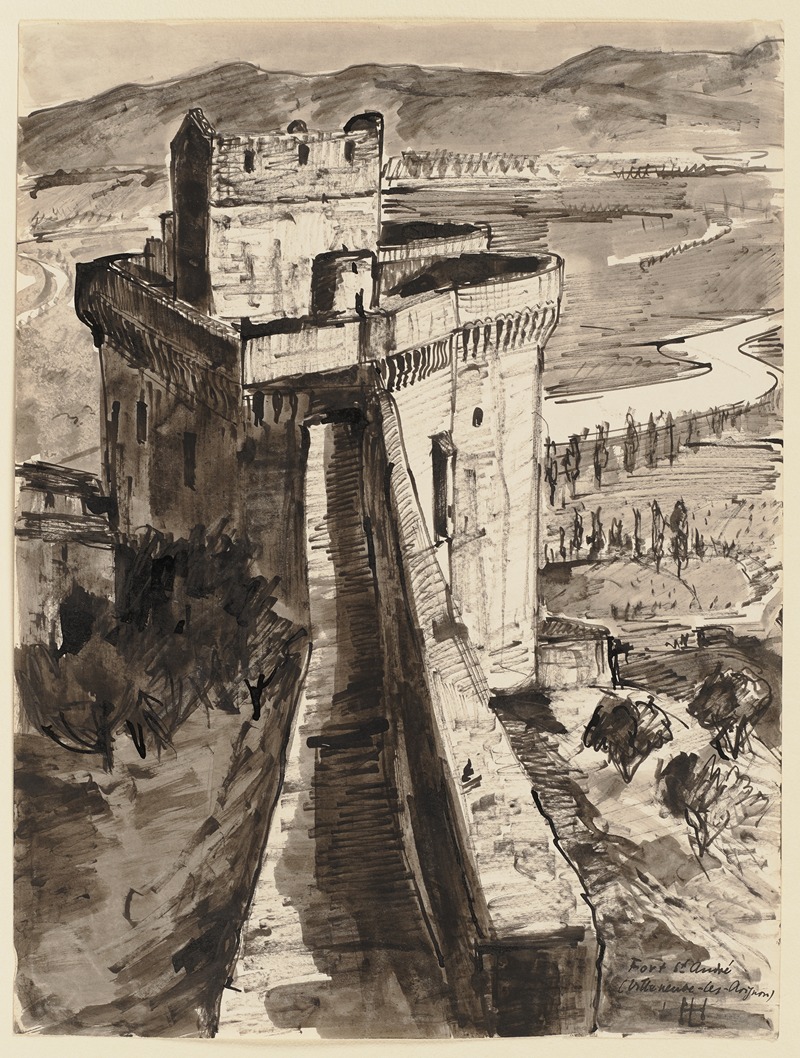
Fort Saint-André in Villeneuve-les-Avignon.
A hand-painted replica of Hermann Lismann’s masterpiece Fort Saint-André in Villeneuve-les-Avignon., meticulously crafted by professional artists to capture the true essence of the original. Each piece is created with museum-quality canvas and rare mineral pigments, carefully painted by experienced artists with delicate brushstrokes and rich, layered colors to perfectly recreate the texture of the original artwork. Unlike machine-printed reproductions, this hand-painted version brings the painting to life, infused with the artist’s emotions and skill in every stroke. Whether for personal collection or home decoration, it instantly elevates the artistic atmosphere of any space.
Hermann Lismann was a German painter known for his contributions to the early 20th-century art scene, particularly within the context of the European avant-garde movement. Born in 1878 in Frankfurt, Lismann studied at the Städelschule in Frankfurt and later in Paris, where he was influenced by the vibrant artistic community and the emerging modernist trends. His work often reflects the dynamic interplay between traditional techniques and modernist experimentation.
One of Lismann's notable works is "Fort Saint-André in Villeneuve-les-Avignon," which captures the historic Fort Saint-André located in the commune of Villeneuve-lès-Avignon in southern France. This fort is a significant historical monument, originally constructed in the 14th century by the French monarchy to assert control over the strategic Rhone River crossing and to protect the Abbey of Saint-André. The fort's imposing structure and its strategic location have made it a subject of interest for many artists and historians.
Lismann's depiction of Fort Saint-André is characterized by his unique style, which blends elements of realism with impressionistic touches. The painting likely showcases the fort's robust architecture, with its high walls and towers, set against the backdrop of the picturesque Provencal landscape. Lismann's use of color and light would have been instrumental in conveying the atmosphere of the region, capturing the essence of the fort as both a historical monument and a part of the natural scenery.
Throughout his career, Lismann's work was marked by a keen observation of his surroundings and a dedication to capturing the spirit of the places he painted. His time in France, particularly in regions like Provence, provided him with ample inspiration and allowed him to explore different facets of light and color, which are evident in his paintings. "Fort Saint-André in Villeneuve-les-Avignon" is a testament to his ability to merge historical subject matter with a modern artistic approach.
Lismann's contributions to art were recognized during his lifetime, but like many artists of his era, his work was also affected by the tumultuous events of the 20th century, including the two World Wars. Despite these challenges, his paintings remain appreciated for their artistic merit and historical significance. Today, Lismann's works are part of various collections and continue to be studied for their unique perspective on early 20th-century European art.
In summary, "Fort Saint-André in Villeneuve-les-Avignon" by Hermann Lismann is a significant piece that reflects the artist's engagement with historical architecture and his ability to convey the essence of a place through his distinctive artistic style. The painting serves as a bridge between the past and the present, capturing the enduring legacy of Fort Saint-André through the eyes of a modernist painter.

















